![]()
![]()
![]()
Use LEFT and RIGHT arrow keys to navigate between flashcards;
Use UP and DOWN arrow keys to flip the card;
H to show hint;
A reads text to speech;
26 Cards in this Set
- Front
- Back
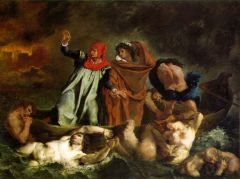
|
Eugene Delacroix, Bark of Dante and Virgil, 1822 |
|
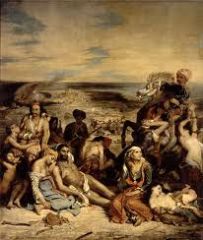
|
Eugene Delacroix, Scenes from the Massacres at Chios, 1824 |
|
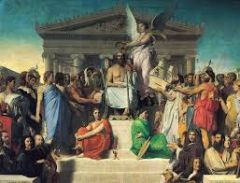
|
Jean-Auguste-Dominique Ingres, Apotheosis of Homer, 1827 |
|
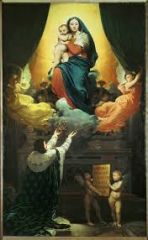
|
Jean-Auguste-Dominique Ingres, Vow of XIII, 1824 |
|
|
Wrote three essays on picturesque beauty, picturesque travel, and on sketching landscape. Schoolmaster, amateur printmaker, and writer. First to apply term “picturesque” to landscape scenery. rejected grand tour concept instead recommended to explore England itself. |
William Gilpin |
|
|
Belief that god and nature are the same. |
Pantheism |
|
|
How would you explain the differences between the Picturesque and the Sublime in Romantic landscape painting in Britain? |
The Picturesque focuses more on the aesthetic of nature while the sublime captures the forces of nature. |
|
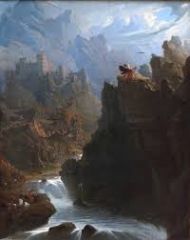
|
John Martin, The Bard, 1812 |
|
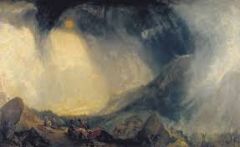
|
William Turner, Snow Storm: Hannibal and His Army Crossing the Alps, 1811 |
|
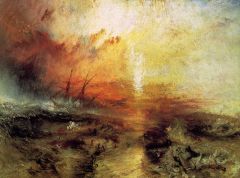
|
William Turner, Slave Ship, 1840 |
|

|
Caspar David Friedrich, Monk by the Sea, 1809 |
|
|
Romantic artist who paints Raft of Medusa, he displays the reverence of nature, which is more powerful than man, important French painter and lithographer, known for The Raft of the Medusa and other paintings. He was one of the pioneers of the Romantic movement. |
Théodore Géricault |
|
|
Period that followed events after French Revolution, fall of 1st Republic, end of 1st empire under Napoleon; Bourbon Monarchy helped restore France |
Bourbon Restoration |
|
|
Constitutional King of France after the fall of the napoleonic empire |
Louis XVIII |
|
|
new print media in 1779 |
Lithography |
|

|
Théodore Géricault, Charging Chasseur, 1812 |
|
|
Briefly describe the Medusa disaster. How did this event serve the political needs of Théodore Géricault during the Bourbon Restoration? |
It was decided to cut the ropes and leave 300 people to peril. Only 15 survived and 5 of the survivors were able to recount their stories. There was canabalism, I insanity, mayhem. |
|
|
What role did lithography play in the formation of Théodore Géricault’s Raft of the Medusa (1819)? |
Theodore Gericault was able to discover this entire story through lithography. |
|
|
In the Raft of the Medusa (1819), Théodore Géricault revolted against Neo-Classical pictorial conventions. How is this rebellion manifested in the compositional structure of the work? |
Gericault definitely has more of a romantic mindset. He’s illuminating the frailties of human nature. There’s this romantic fascination with death and decay as well. This piece also illustrates the romantic sublime through the addition of the sea. Nature is the untamed force. Another compositional aspect that revolts against neo-classicism is that he disrupts the entire composition. For instance the center is ruptured. There are two parametal groupings taking place along with an unstable triangular structure. The diagonals in the composition are even reminiscent of baroque elements. |
|
|
How does Théodore Géricault invoke the Romantic notions of alienation, decay, and death in the Raft of the Medusa? |
Gericault directly takes inspiration from romantic painters such as Gros’ Napoleon in the Plague House at Jaffa . There’s this romantic fascination with death and decay which is emphasized in both pieces through their cadaverous hues |
|
|
Succeeded Louis XVIII from 1824-1830. Was conservative and reactionary. Attempted to reinstate absolutism and was abdicated by Paris when he dissolved the Chamber of Deputies. |
Charles X |
|
|
reactionary royal and catholic movement, anti liberal anti republican, historical justification, the origins of royal class. |
Ultra-Royalism |
|
|
from the Ottoman empire, during the 1820-1830 supported by some French nationalists. Gore and violence spread across the mediterranean, |
Greek War of Independence |
|
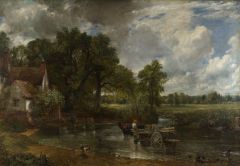
|
John Constable, Haywain, 1824 |
|
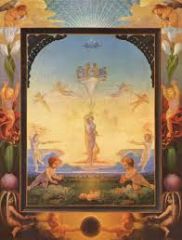
|
Phillip Otto Runge, Morning, 1808 |
|
|
Play by british romantic poet George Gordon, Lord Byron. (Page218) Poetic drama Sardanapalus. |
lord byron |

